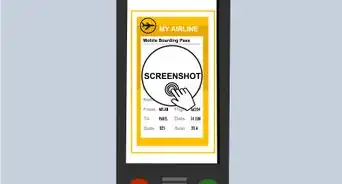wikiHow is a “wiki,” similar to Wikipedia, which means that many of our articles are co-written by multiple authors. To create this article, 44 people, some anonymous, worked to edit and improve it over time.
There are 9 references cited in this article, which can be found at the bottom of the page.
This article has been viewed 343,300 times.
Learn more...
Increasing airport security regulations are making it more and more difficult to know what can and can't be carried on board an aircraft. You may leave a country with your gel pack, only to have it confiscated upon return. This article provides you guidelines for staying informed and minimizing the risks of losing something to security, being subjected to additional screening, missing your flight, or ending up in trouble.
Steps
Know the Basics
-
1Know the 3-1-1 rule. For travel in the US, a passenger is allowed in their carry-on no more than a maximum of 3 bottles containing no more than 3.4 ounces (100 ml) of liquid. Bottles must be placed in a quart-sized, clear plastic, zip-top bag.[2]
-
2Rethink packing potentially problematic items. Certain items that are generally permitted may still be subject to additional screening or prohibited at security's discretion (such as if it triggers an alarm or appears to have been tampered with). Items that can potentially pose security concerns include:
- sharp objects
- sporting goods
- tools
- firearms and martial arts weapons
- foods including creamy dips, jams, and salsa
- liquid contain decorative items such as lava lamps or snow globes
- Cannabis, even if it is legal in your state/country[4]
-
3Always take prescriptions with your medication, and try to carry on medications in their original packaging. This will not only enable you to carry the item on the aircraft with you, it will also assist with any questions a customs officer might raise in your country of arrival.[5]
-
4Play it safe. If you are unsure about an item, mail it ahead of time or leave it at home.
Be Prepared and Aware
-
1Know what you have. You are responsible for your belongings and what's in them, so double-check pockets and compartments of clothing and bags for items that may have been forgotten about such as lighters, swiss-army knives, bottle openers, etc.
-
2Be aware that the list of prohibited items is constantly being updated, especially when there is a security scare. Refer to the relevant websites to find out immediately before travelling what restrictions are in place.[6]
-
3Declare larger quantities of liquids. There may be exemptions for certain items such as medications, baby formula, breast milk, and certain foods. You can declare these items but should know that officers may need to conduct additional screening which can take longer.[7]
Community Q&A
-
QuestionCan I bring a small sewing scissors on for knitting?
 Community AnswerIf the ends are rounded instead of pointed, like kids' craft scissors, then you might be able to. Keep in mind that most scissors are not allowed on planes and will be confiscated by security. It would be best to call the airline or airport and double-check.
Community AnswerIf the ends are rounded instead of pointed, like kids' craft scissors, then you might be able to. Keep in mind that most scissors are not allowed on planes and will be confiscated by security. It would be best to call the airline or airport and double-check. -
QuestionHow many prescription medicines can I carry on board?
 Community AnswerCall the airline and ask them about their policy. I've seen people carrying quite a lot of medication. I doubt they will say no if you absolutely have to take them with you. Many times passengers will take the pills they need before the flight and put their prescriptions into their checked luggage, so this could be an option for you as well.
Community AnswerCall the airline and ask them about their policy. I've seen people carrying quite a lot of medication. I doubt they will say no if you absolutely have to take them with you. Many times passengers will take the pills they need before the flight and put their prescriptions into their checked luggage, so this could be an option for you as well. -
QuestionWill a tin opener pass security?
 Community AnswerThey will likely not pass security as they often have sharp edges on the cutting blades. In general, you should try to avoid bringing anything sharp, especially in carry-on baggage.
Community AnswerThey will likely not pass security as they often have sharp edges on the cutting blades. In general, you should try to avoid bringing anything sharp, especially in carry-on baggage.
Warnings
- Avoid making any jokes about guns, bombs, terrorism, weapons, knives, stabbings, murders, suffocation, crime, illegal/illicit conduct, inefficiency of TSA, or anything else that could be taken as a threat.⧼thumbs_response⧽
- Airport security views safety issues very seriously and will not tolerate people behaving badly. Try to be patient and understanding and don't argue, make a fuss, or throw a temper tantrum.⧼thumbs_response⧽
- Never make a joke about having prohibited items. Airport security is required to take such statements seriously.⧼thumbs_response⧽
- You are responsible for what's in your bags, so keep an eye on your belongings at all times and know what's inside of them. Keep an eye on children's packing and make sure you know what they have packed.⧼thumbs_response⧽
References
- ↑ http://www.tsa.gov/traveler-information
- ↑ https://www.tsa.gov/videos/travel-tips-3-1-1-liquids-rule
- ↑ https://www.express.co.uk/travel/articles/1051583/hand-luggage-rules-travel-urn-ashes-additional-security-check
- ↑ https://www.tsa.gov/travel/security-screening/whatcanibring/items/medical-marijuana
- ↑ https://www.gov.uk/hand-luggage-restrictions/essential-medicines-and-medical-equipment
- ↑ https://wgno.com/2019/06/18/tsa-updates-list-of-items-prohibited-on-airplanes/
- ↑ https://www.tsa.gov/travel/security-screening/liquids-rule
- Permitted & Prohibited Items - Transportation Security Administration (USA)
- IATA - for any security-related news stories and some passenger information; international.
About This Article
These days, there are many restrictions as to what you can and can’t bring on an aircraft, but with a little preparation, you’ll breeze through security. For traveling in the US, you’re not allowed to bring liquids, unless they’re in bottles smaller than 3.4 ounces. These bottles must be placed in a clear, sealable zip-lock bag. You shouldn’t bring sharp objects or anything that could be construed as a weapon. For instance, don’t bring firearms, knives, lighters, or tools. If you have medicine, bring your prescription and the original packaging if you have it, in case you’re questioned by customs. If you’re still unsure what you can or can’t bring, visit your airline’s website for a list of aircraft restrictions. To learn how to mail items you can’t fly with, read on!

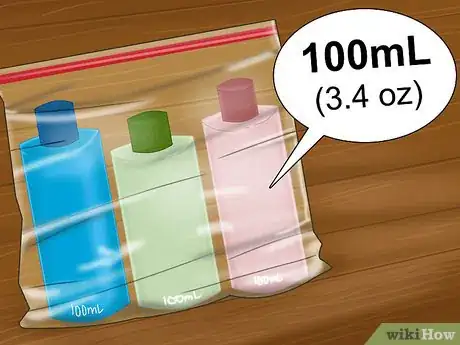
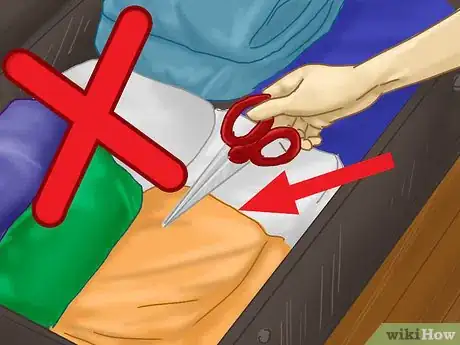
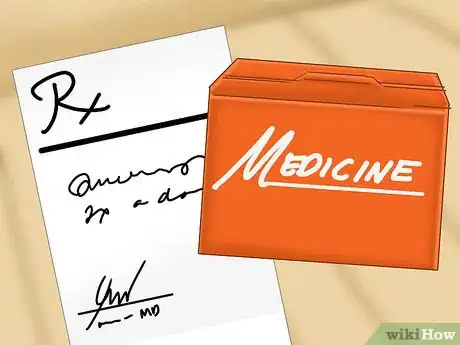

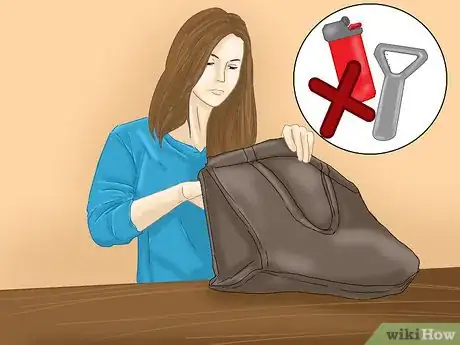
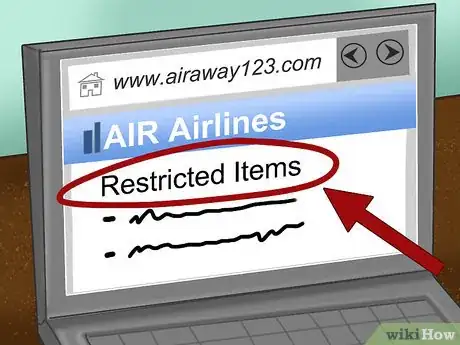
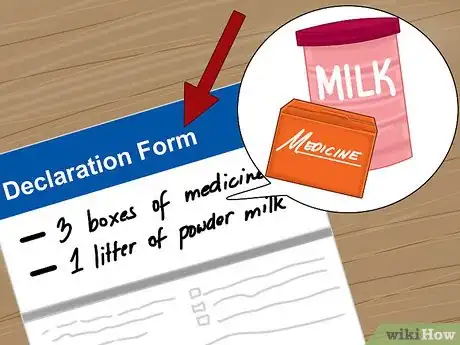








-Step-12.webp)

